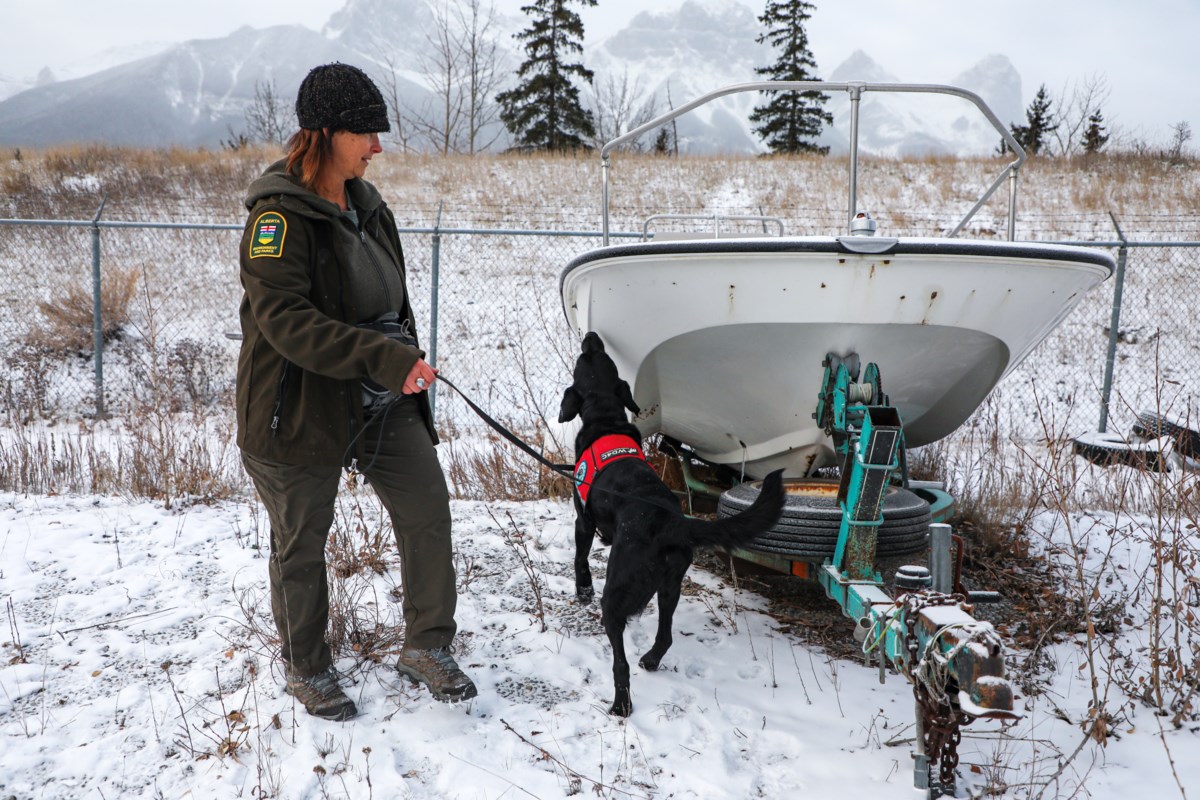Alberta increasing arsenal in fight against aquatic invasive species
Alberta increasing arsenal in fight against aquatic invasive species St. Albert Gazette


The Province of Alberta Takes Action to Prevent Aquatic Invasive Species

The provincial government of Alberta has established a new task force and is increasing the number of watercraft inspection stations to address the issue of aquatic invasive species. This initiative aims to prevent the introduction of zebra and quagga mussels into Alberta. The government plans to invest $2.5 million in increasing watercraft inspection and detection efforts.
Background
Parks Canada recently closed all waterbodies in Yoho and Kootenay national parks to fishing and watercraft activities, such as canoes, kayaks, and paddle boards, until March 31, 2025. This closure is a response to the spread of whirling disease, which can lead to mass fish die-offs. Whirling disease poses a significant threat to aquatic ecosystems and the economy.
Increased Inspection Efforts
As part of the government’s plan, the number of dedicated watercraft inspectors will be increased from 35 to 50 this year. Additionally, the number of inspection stations will be raised from five to seven this year, with four more stations planned for next year. A roving inspection crew will be established to respond to notices from the Canadian Border Service Agency and conduct inspections at high traffic areas. Furthermore, an additional dog and handler team will be added to the invasive species K-9 inspection unit.
Aquatic Invasive Species Task Force
The provincial aquatic invasive species task force will collaborate with partners to address critical topics, including improving border protections, strengthening rules and programs, and considering the need for stronger penalties or restrictions. The task force will play a crucial role in achieving the Sustainable Development Goals (SDGs) related to protecting aquatic ecosystems and promoting sustainable economic growth.
Importance of Prevention
Rebecca Schulz, Alberta’s environment and protected areas minister, emphasized the importance of preventing the introduction of invasive species. These species not only threaten the biodiversity of lakes and rivers but also pose risks to water infrastructure and the economy. By investing in prevention measures, Alberta aims to maintain its status as a province free of zebra and quagga mussels.
Current Situation
Although Alberta is currently free of zebra and quagga mussels, increased detections in Idaho and Manitoba last year have heightened the risk of these invasive species being introduced into the province. Banff National Park monitors for aquatic invasive species, but stricter regulations, similar to those in Yoho and Kootenay national parks, are not yet in place. Waterton Lakes National Park has implemented more stringent regulations, including banning non-motorized craft from outside the park and prohibiting fishing in streams and rivers.
Under the new rules in Waterton Lakes National Park, businesses operating within the park boundaries and users whose watercraft do not leave the park can still launch their watercraft. However, owners must complete an aquatics invasive species course and have their watercraft inspected by Parks Canada to qualify for this exemption.
Whirling Disease
Last October, Parks Canada closed all water access in Yoho and Kootenay national parks due to the discovery of whirling disease in non-native brook trout. Whirling disease can cause deformities and high mortality rates in fish, particularly young fish. It is spread through contact between fish and a freshwater worm. Once established, whirling disease is difficult to eradicate.
Efforts to Mitigate the Risk
Parks Canada conducted an in-depth analysis over the winter to determine the best measures to mitigate the risk posed by whirling disease in Yoho and Kootenay national parks. The closures will protect vulnerable fish species, such as trout and salmon, and allow for further sampling and monitoring actions to inform future management strategies.
Whirling disease was first detected in Canada in Johnson Lake in 2016. The lake was drained, and all fish were killed to prevent harm to at-risk species. Whirling disease was initially discovered in the United States in 1958 and became a major concern in the 1990s due to significant losses of wild rainbow trout in Colorado and Montana.
SDGs, Targets, and Indicators
1. Which SDGs are addressed or connected to the issues highlighted in the article?
- SDG 14: Life Below Water – Protect and restore water-related ecosystems and promote their sustainable use.
- SDG 15: Life on Land – Protect, restore, and promote sustainable use of terrestrial ecosystems, sustainably manage forests, combat desertification, and halt and reverse land degradation and halt biodiversity loss.
2. What specific targets under those SDGs can be identified based on the article’s content?
- Target 14.4: By 2020, effectively regulate harvesting and end overfishing, illegal, unreported and unregulated (IUU) fishing and destructive fishing practices and implement science-based management plans, in order to restore fish stocks in the shortest time feasible.
- Target 15.5: Take urgent and significant action to reduce the degradation of natural habitats, halt the loss of biodiversity and, by 2020, protect and prevent the extinction of threatened species.
3. Are there any indicators mentioned or implied in the article that can be used to measure progress towards the identified targets?
- Indicator 14.4.1: Proportion of fish stocks within biologically sustainable levels.
- Indicator 15.5.1: Red List Index.
The article discusses the provincial government’s efforts to tackle aquatic invasive species, specifically zebra and quagga mussels, and the closure of waterbodies in national parks to fight against the spread of whirling disease. These issues are connected to SDG 14 (Life Below Water) and SDG 15 (Life on Land).
Based on the article’s content, the specific targets that can be identified are Target 14.4, which aims to restore fish stocks by effectively regulating harvesting and ending destructive fishing practices, and Target 15.5, which focuses on reducing habitat degradation and preventing species extinction.
The article does not explicitly mention indicators, but two relevant indicators can be used to measure progress towards the identified targets. Indicator 14.4.1 measures the proportion of fish stocks within biologically sustainable levels, indicating progress in restoring fish stocks. Indicator 15.5.1, the Red List Index, measures the extinction risk of species and can be used to assess progress in preventing species extinction.
4. Table: SDGs, Targets, and Indicators
| SDGs | Targets | Indicators |
|---|---|---|
| SDG 14: Life Below Water | Target 14.4: By 2020, effectively regulate harvesting and end overfishing, illegal, unreported and unregulated (IUU) fishing and destructive fishing practices and implement science-based management plans, in order to restore fish stocks in the shortest time feasible. | Indicator 14.4.1: Proportion of fish stocks within biologically sustainable levels. |
| SDG 15: Life on Land | Target 15.5: Take urgent and significant action to reduce the degradation of natural habitats, halt the loss of biodiversity and, by 2020, protect and prevent the extinction of threatened species. | Indicator 15.5.1: Red List Index. |
Behold! This splendid article springs forth from the wellspring of knowledge, shaped by a wondrous proprietary AI technology that delved into a vast ocean of data, illuminating the path towards the Sustainable Development Goals. Remember that all rights are reserved by SDG Investors LLC, empowering us to champion progress together.
Source: stalbertgazette.com

Join us, as fellow seekers of change, on a transformative journey at https://sdgtalks.ai/welcome, where you can become a member and actively contribute to shaping a brighter future.







